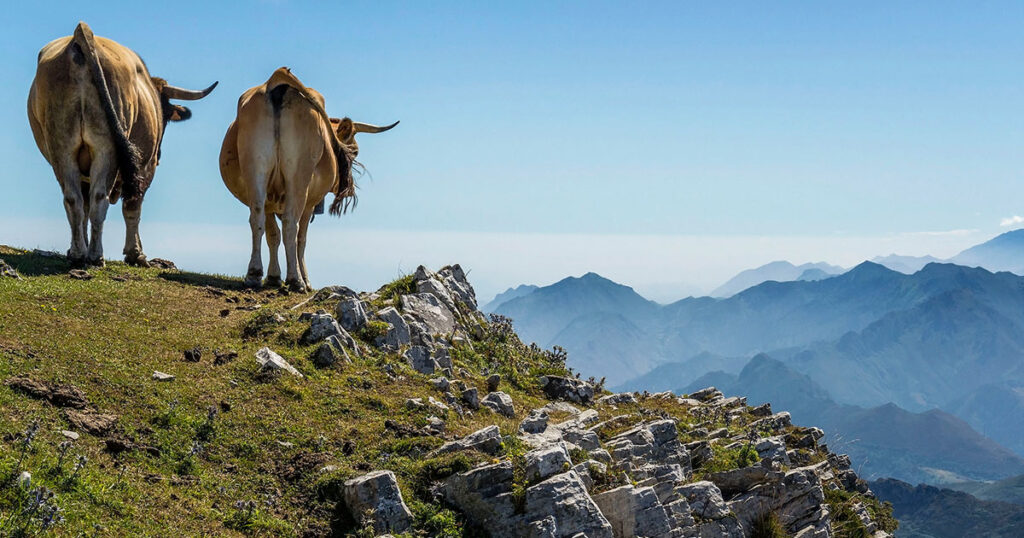
I had just settled onto the sofa with my morning cup of coffee and my tablet and some thoughts in my head for a short piece on animals, inspired by an upper intermediate student. The student was now 16, but I had met her four years earlier, at the beginning of the year, in the fall of 2018, when she was first in class with me. She returned the next fall for a new year. September, as far as I’m concerned, is the start of any year. It always has been. The year begins when school begins, and ends in a full, happy summer that dwindles as the days do, until it is all gone, and the next year appears. Halloween, Christmas, and Easter break it into sections. New Year’s, despite the name, brings not a fresh start, but a continuation—same cold season of winter, gradually warming into spring, then summer, that three-month culmination of the year. Then summer ends, vacations are over, and the new year starts up. Others may define a year differently, but it has always been so for me: first as a teacher’s kid, then as a student, later as a mother of schoolkids, now as a teacher myself. Classes don’t start at my language academy until October, but by mid-September, children in Spain are back at school and work is on my mind again.
Two-thirds of the way through this student’s second year with me, Covid appeared in Spain and then, overnight, it dominated the news. I hardly had a chance to discuss it with my classes because from one day to the next, with no warning, the language school was closed, as were so many businesses. Two days after that, we were all confined to our homes. Children, except for a medical emergency, were not allowed out, and adults only for strictly necessary errands. No bars on the windows, but to many, homes felt like cages. For others, life inside the bars or outside was full of the same challenges, in the way that for a goat, whether inside a fence or free on the mountainside, the task is the same, conquering the environment by consuming it. Amazon did big business. And for a few people, the lockdown was more like a retreat—a period blessedly free of the usual day-to-day anxieties about work, school, social life, and other common trials.
The first sip of coffee pushed all organized thought from my mind. I waited for the relief of coffee to recede and my thoughts to return. But the insight about my student and animals did not. I did, however, remember the trigger, a question for my upper intermediate class: How many wild animals that live in cities could they name? A seagull had soared by the classroom window at that moment, and I’d pointed at it and said, “That’s one.” Pigeons, mice, and snakes, the students had volunteered. Then wild boars, foxes, and rats. “Wild boars?” a student asked, and another told about a video posted online of a family of jabalis trotting down a main artery in the city late one night. What else? I’d had in mind hedgehogs, because I had recently seen a dead one in a street on the outskirts. But instead, in her calm, amused way, one of the girls said cows.
“Cows?” I was perplexed. “Cows aren’t wild.”
The student continued to smile. “Some are.” She told of having seen one on a walking trail in the city.
The experience of rounding a curve on the paths that wind around much of the city and coming upon a pair of cows in a field or on a farmyard of geese is a great plus for many city dwellers. Many have hardly any contact with nature other than pets on leashes, flowers in pots, the ocean rolling onto the beach, and the sky overhead. I could picture a cow lifting its head to watch this girl pass. Would that be enough to startle her?
“Possibly scary,” I said, “but not wild.”
With her calm, knowing smile she repeated, “Yes, wild,” and I again disagreed with her. In a number of different species, I said, the female is called a cow. Elephants, for example, and rhinos, hippos, and deer. In that way, a cow might be wild because the species counts as wild. But a cow, a dairy cow—that animal is not wild. Again she said she’d seen a wild one. In the summer, she added, these same wild animals roam the mountainsides.
So, I thought, it was not dairy cows but beef cows she was talking about. “Those animals are not wild,” I told her. “They aren’t pets, but they do have owners, someone who watches out for them, just like for sheep or goats grazing in the high country. They’re free, sort of. They aren’t wild.”
Part of the problem was the word wild. Besides meaning not tame or not domesticated, wild means dangerous or vicious. Perhaps she was thinking of a testy cow shaking its horns at her from the far side of a fence.
As for the other part of the problem—well, that’s what slipped away. As with a furtive wild animal, a fox or a rabbit at the edge of a glade, if you take your eye from it, it’s gone. If only my idea had been a big, lumbering cow. A cow I could have tracked, wild or otherwise.

